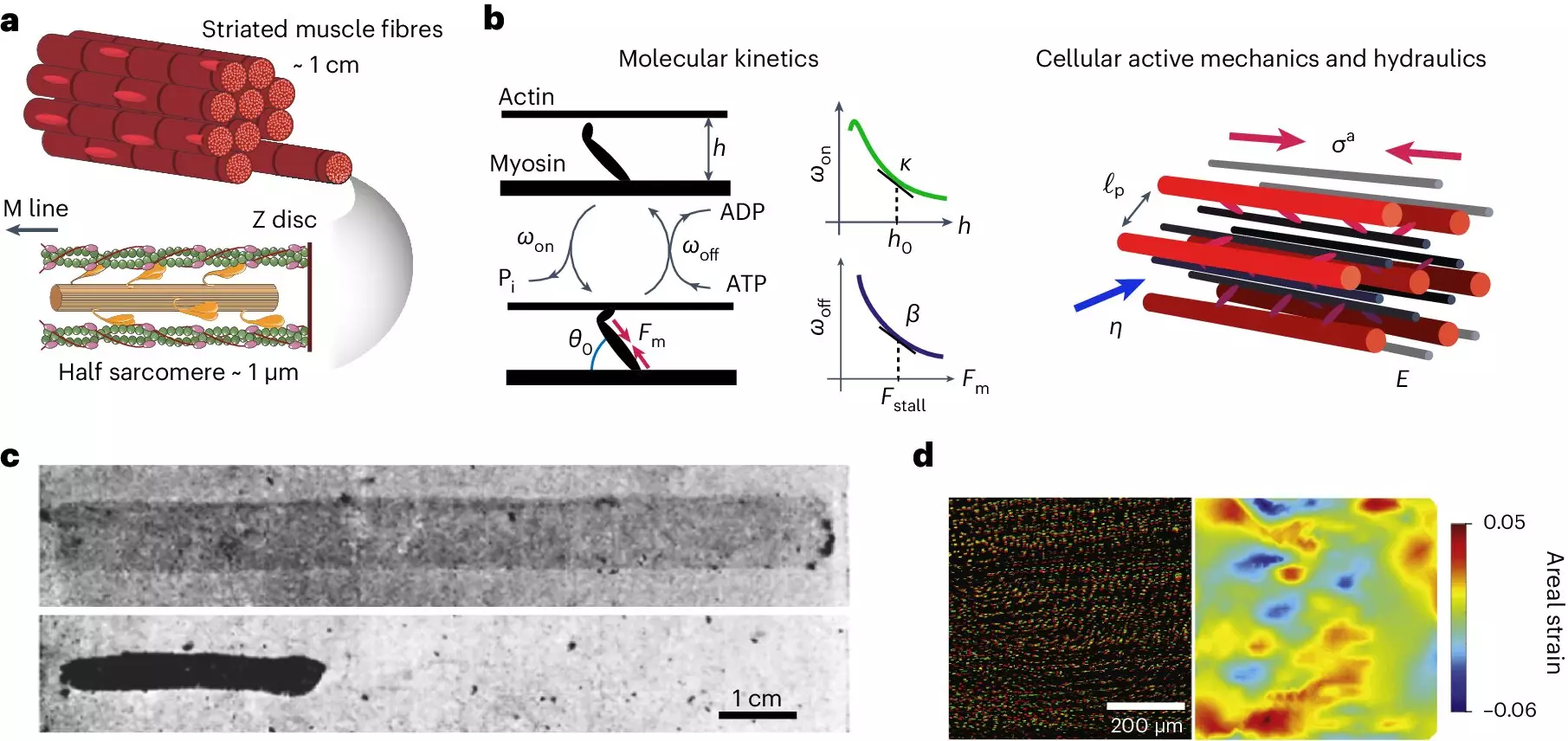Water, often regarded as an essential yet passive component of biological systems, is now at the forefront of groundbreaking research into muscle contraction. A pivotal study conducted by researchers from the University of Michigan suggests that the dynamics of water flow within muscle fibers significantly influence how quickly these fibers can contract. This insight challenges the long-held assumption that muscle performance is primarily dictated by molecular interactions and mechanics. Instead, it proposes that a more holistic view that integrates the physical properties of muscle fibers and their fluid components yields richer insights into muscle functionality.
Muscle composition is primarily aqueous, with around 70% water, which traditionally led scientists to overlook its functional importance. The study led by physicist Suraj Shankar, collaborating with L. Mahadevan from Harvard University, reveals that understanding muscles as complex, three-dimensional, water-filled structures can provide fresh insights into their properties. By crafting theoretical models, the duo highlights how fluid dynamics within these fibrous structures can dictate the limits of muscle performance in various animals.
Unveiling the Concept of “Odd Elasticity”
One of the most striking revelations from this research is the identification of “odd elasticity,” a property that transcends conventional elasticity observed in materials like rubber bands. Unlike a simple elastic band that uniformly stretches and contracts, muscles exhibit a uniquely sophisticated mechanism. When a muscle fiber contracts, it doesn’t merely shorten but also bulges outward, which contradicts traditional mechanical expectations. This behavior indicates that muscle tissues function not just as passive structures but as active ones capable of generating power through multidirectional movements.
Odd elasticity may redefine our understanding of muscle mechanics, suggesting that muscular performance cannot be fully explained by molecular action alone. The newfound property implies that muscles act as “active sponges,” working dynamically to store and release energy in ways previously unrecognized. This realization has profound implications, not only for the scientific community but also for fields ranging from sports science to robotics, where mimicking muscular functions holds the potential for innovation.
The Bidirectional Nature of Muscle Mechanics
The complexity of muscle function is further accentuated by the realization that muscle contraction is not merely a linear process but a multidimensional one. Shankar and his colleagues posit that this intricate interplay between contraction and outward bulging enables muscles to generate incredible amounts of force efficiently. In particular, the research pointed out that while mammals and other larger organisms tend to exhibit muscle contractions that prioritize molecular control through the nervous system, smaller organisms like insects rely more heavily on the rapid movement of fluids within their muscle fibers.
This distinction is critical in understanding how different species exploit their muscular structures for various forms of movement, particularly in those that require rapid wing beats or other swift actions. The study suggests that the role of fluid dynamics becomes even more pronounced as the speed of muscular contractions increases, hinting at an upper limit to contraction speed influenced by the flow of water.
Implications for Future Research and Applications
The implications of this research extend beyond theoretical models and experimental observations; they pave the way for a re-evaluation of muscle physiology as a whole. For instance, finding that muscle performance can be significantly enhanced or limited by the movement of water opens new investigative avenues into muscular disorders, rehabilitation methods, and even the development of bio-inspired robots. This integrative approach offers an exciting frontier that bridges the gap between biology, physics, and engineering.
Moreover, the discovery of odd elasticity may revolutionize our understanding of energy dynamics in biological systems. Unlike conventional energy systems that adhere strictly to the conservation of energy, muscle fibers seem to violate traditional principles by transforming biochemical energy into mechanical work in a uniquely efficacious manner. This revelation warrants further exploration into the energetic properties of living tissues, potentially leading to breakthroughs in biomimetic materials and technologies.
The advancement of life sciences hinges on embracing complexity and confronting conventional wisdom. By harnessing the intricate dynamics of forces, fluids, and structures within muscle fibers, scientists can unlock new paradigms that enhance our comprehension of life itself. Shankar’s research serves as a clarion call for a more integrated perspective on biological systems, challenging the scientific community to rethink how we interpret muscle function and its diverse capabilities.

